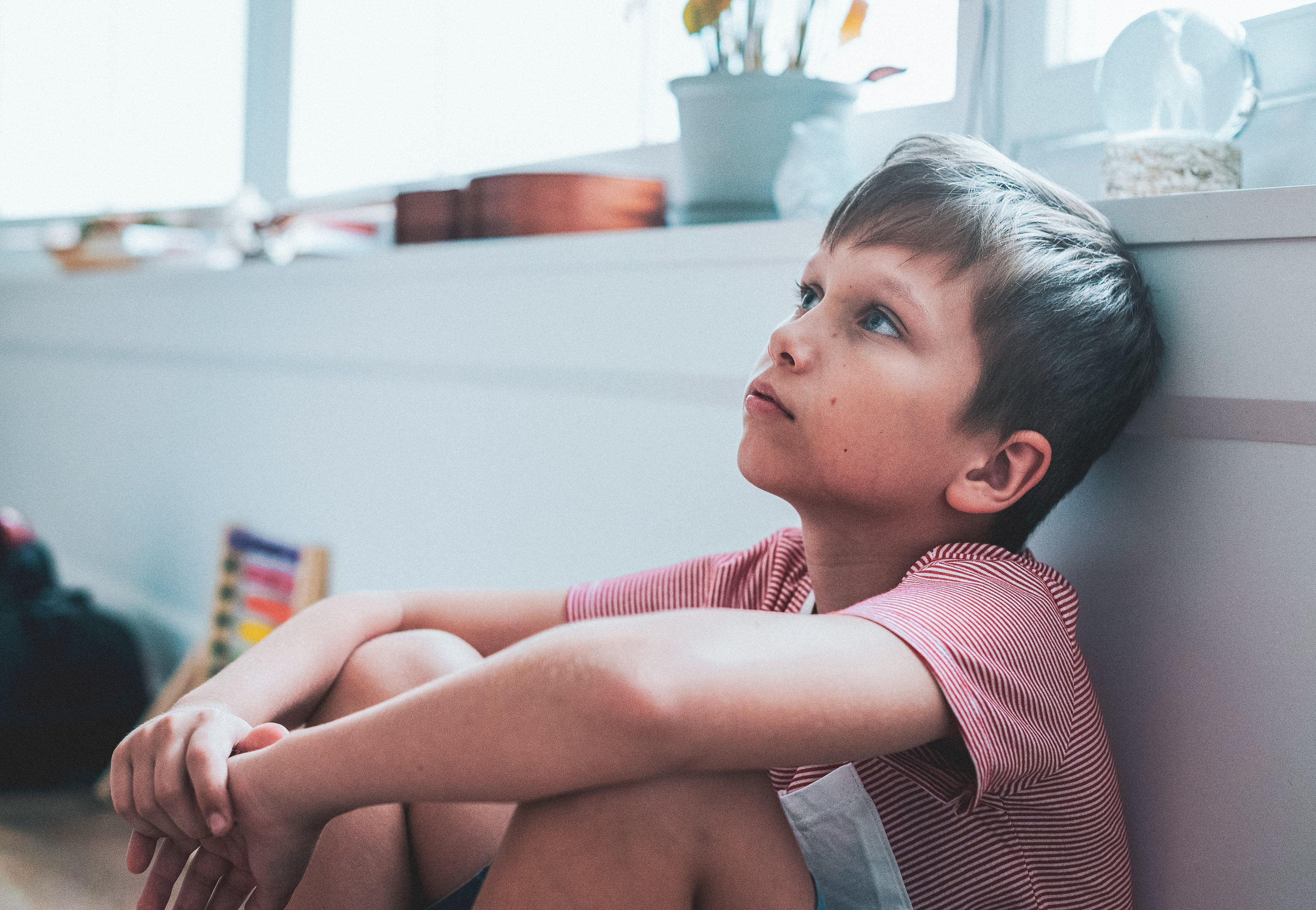ADHD vs. Anxiety: Key Differences, Overlap & Treatment Strategies
Explore the differences between ADHD and anxiety, including symptoms and effective treatment options. Read on to find clarity and support for your journey.



If your child often worries and is frequently restless, you may wonder if they could have attention-deficit/hyperactivity disorder (ADHD) or an anxiety disorder. These are distinct mental health conditions, but some of their symptoms overlap. As a parent, it's normal to feel unsure of what’s really going on.
Read on to learn the similarities and differences between ADHD vs anxiety, as well as tips for how to help manage both.
Key Takeaways
- ADHD and anxiety create challenges with concentration, restlessness, and other symptoms.
- The best way to distinguish between them includes tracking symptoms and psychological testing.
- Treating and managing either condition may include therapy, medication, and lifestyle adjustments.
Core differences: ADHD & anxiety
While ADHD and anxiety share some similarities, there are also important differences. Fear may cause a child with anxiety to avoid certain people, activities, or places (whether a threat is real or not). A constant drive for stimulation characterizes ADHD this is partially due to dopamine deficiency. If a task is perceived as "boring," a child with ADHD may not feel motivated enough to complete it.
Executive function deficits vs. worry patterns
Some of the main executive function deficits in ADHD manifest as forgetfulness. Many children with anxiety also experience forgetfulness. However, it's usually from cognitive overload and an overly reactive stress response.
A child with ADHD may experience anxiety and worry about the consequences of not finishing tasks or meeting expectations. A child with anxiety worries about perceived dangers (regardless of whether they're real or likely).
Physical hyperactivity vs. fight-or-flight response
Children with ADHD or anxiety may seem constantly in motion, fidgeting, or moving around. However, the reasons for this behavior differ between the two conditions.
Those with ADHD often feel restless due to a biological need for stimulation.
While movement may improve focus, it also makes it difficult to sit still.
Children with anxiety tend to be restless due to nervous energy.
Being in a continuous "fight-or-flight" response creates a buildup of adrenaline that needs to be released. They may be just as fidgety, but the reason is different than a child with ADHD.
Task avoidance motivations
Children with ADHD often avoid tasks due to challenges in planning and organizing. If they find the task boring or unstimulating, their motivation decreases.
An anxious child may delay or avoid activities due to fear. For example, a child with social anxiety might struggle to concentrate on homework because of excessive worry about an upcoming school event. Therefore, they struggle to get things done.
Understanding ADHD and anxiety
Anxiety disorders and ADHD frequently co-occur, which can make things confusing, but they are two distinct disorders. Overlapping symptoms that appear similar can make diagnosing either one challenging.
While they share some similar symptoms, ADHD and anxiety actually develop for differing reasons. ADHD is a neurodevelopmental disorder that results in differences in brain structure and chemistry. Anxiety disorders are mental health disorders that stem from your "fight or flight" response to a perceived threat.
Examples of anxiety disorders include:
- Generalized anxiety disorder (GAD)
- Social anxiety disorder (SAD)
- Panic disorder
Prevalence and comorbidity
ADHD and anxiety disorder are among the most commonly diagnosed disorders. Estimates vary by study and age, but anxiety disorders co-occur in an appreciable proportion of children with ADHD (commonly reported in the ~15–40% range; some large surveys report roughly 4 in 10 children with ADHD have anxiety. For effective treatment, it's important to address both.
Shared symptoms and why they overlap
Determining the cause of your child's symptoms isn't always so simple. It's easy to mistake one condition for the other. Here are some shared symptoms.
Inattention and concentration problems
Concentration issues are common among children with ADHD and anxiety. For example, a kid with ADHD often struggles with staying focused on things that are "understimulating," like homework. A child with anxiety struggles with concentration, too, but these issues arise due to persistent, excessive worry.
Restlessness, agitation, and irritability
Both ADHD and anxiety cause restlessness. For kids with ADHD, it's because of hyperactivity. A child with anxiety may appear restless due to pent-up anxiety that is released through movement (like fidgeting) or pacing.
Agitation, frustration, and irritability are commonly seen in both conditions, too. For a child with ADHD, emotional dysregulation can be overwhelming and difficult to control, leading to frustration and tantrums. An inability to control fear and worry can also cause a child with anxiety to act out similarly.
Sleep disturbances
Sleep issues are common among kids with ADHD and anxiety. Kids with anxiety may have difficulty coping with stress, making sleep difficult. Kids with ADHD often have trouble winding down and sleeping because of hyperactivity.
Intrusive thoughts and rumination
Children with ADHD and anxiety often experience unwanted thoughts and intense worry, but for different reasons. Kids with anxiety tend to have fears about unlikely threats or past events. Meanwhile, a kid with ADHD often worries about how others see them or fears failing their responsibilities.

Misdiagnosis and secondary anxiety
ADHD and anxiety symptoms often overlap, which can lead to misdiagnosis in children. Additionally, chronic stress from ADHD symptoms may heighten the risk of developing an anxiety disorder.
Inattentive ADHD often leads to anxiety due to difficulties with executive functions, resulting in a fear of failure and chronic stress. A child or teen with inattentive ADHD may often worry about their performance and strive for perfection to compensate. For this reason, they may be misdiagnosed with anxiety when their symptoms are actually related to ADHD.
Primary vs. secondary anxiety
Anxiety can develop independently of ADHD or as a result of it. Primary anxiety is a separate disorder that may develop before or alongside ADHD. Children can also develop an anxiety disorder because of difficult ADHD symptoms. Struggles with homework, problems with friends, and feelings of loneliness can result in anxiety.
Proportionality of worry to stressors
Children with ADHD worry about different things than kids with anxiety. Kids with ADHD worry about aspects of their life affected by executive functioning, like daily tasks or homework.
Children with anxiety may excessively worry about the future or things unlikely to occur. It may significantly affect their ability to function normally.
Triggers of inattention
Children with ADHD and anxiety may seem preoccupied, but for different reasons. Kids with ADHD have problems focusing on uninteresting, low-reward tasks, as their brains are wired for novelty. They may also seem to jump from one thought to another.
Anxiety-related inattention in children occurs when their minds are preoccupied with worries and fears, making it hard to focus on the present. In contrast, a child with ADHD can't focus because of emotional dysregulation. This makes it hard to pay attention and stay on task.
Diagnosis and treatment for ADHD and anxiety
ADHD and anxiety share some similarities, but they are distinct conditions. Only a professional can determine which one your child is dealing with, or if they’re dealing with both. It's important to get a proper diagnosis in order to find solutions that will help them manage their symptoms.
Recommended screening tools
When a doctor or mental health provider screens your child for ADHD, they will ask detailed questions about your child’s functioning at school, home, and elsewhere. The answers to these questions will help the doctor better understand how the symptoms affect your child.
Because ADHD evaluations are quite comprehensive, your child’s doctor or provider may also talk to their teachers and other professionals.
As part of the process, the provider or doctor may use several screening tools to diagnose ADHD in children, such as;
- The Vanderbilt Assessment Scales
- Conners Rating Scale
- The Swanson, Nolan and Pelham Teacher and Parent Rating Scale (SNAP-IV)
For diagnosing anxiety in children, professionals may use the following tools:
- Screen for Child Anxiety Related Emotional Disorders (SCARED)
- Revised Children's Anxiety and Depression Scale (RCADS)
For example, the Adult ADHD Self-Report Scale is useful for checking for ADHD. The GAD-7 is a standard measure for screening anxiety symptoms. These are used by a trained mental health provider.
It’s important to have your child tested for both anxiety and ADHD, as these conditions often co-occur. This way, your child can receive the treatment they need. Focusing on only one can result in incomplete care and poorer outcomes.

Therapy and coaching for managing ADHD and anxiety
CBT targets anxiety directly and can help with some ADHD-related problems (e.g., organization through behavioral components). A therapist can use CBT to help your child identify and change negative thoughts. They can also help them develop coping skills to use whenever they get anxious.
ADHD coaching is another useful way to help your child build life skills, enhance self-awareness, and manage emotions. Therapists or specially trained professionals can provide ADHD coaching. An ADHD coach can provide structure and teach ways to manage negative thoughts. They also focus on real-world skills, things like time management, goal setting, and organization.
Parenting a child with ADHD or anxiety is challenging. Through parent training, you can learn useful tips for managing behavior and creating a supportive home environment.
Parent training is an evidence-based practice that can teach skills such as using positive reinforcement for behavior change and setting clear expectations and rules.
It can also help reduce stress and boost your confidence in managing your child’s behavior.
Medication considerations
In some cases, your child may benefit from medication on top of therapy or coaching.
If your child's ADHD symptoms are causing them to struggle with executive function, a stimulant medication can help by decreasing hyperactivity while improving focus. Stimulants are commonly used for ADHD treatment. However, if a child has increased anxiety, they may benefit from a non-stimulant ADHD medication like atomoxetine (Strattera).
If your child is diagnosed with an anxiety disorder, a provider might prescribe a medication like a selective serotonin reuptake inhibitor (SSRI) to reduce anxiety symptoms. SSRIs are used to help treat symptoms of generalized anxiety disorder, panic disorder, and social anxiety disorder.
For children with both ADHD and an anxiety disorder, a combination approach is useful. This type of treatment may involve:
- Medications
- ADHD coaching
- Parent training
- Family and individual therapy
How Emora Health can help
Early diagnosis and treatment are essential for good mental health. If you're seeking support for your child's anxiety or ADHD, Emora Health’s online therapy services can help.
Our clinicians specialize in helping children and adolescents. They can diagnose anxiety disorders and conduct thorough ADHD evaluations virtually. From there, they’ll create a treatment plan tailored to your child’s needs and goals.
Online therapy provides your child with a safe space to discuss their feelings and learn how to manage their symptoms. Begin here to check your insurance and receive a real-time estimate for your costs, and start care in as little as two days.
Frequently Asked Questions
Inattention is a common symptom in both ADHD and anxiety. In ADHD, it results from under-stimulation, while in anxiety, it stems from worry. Both conditions can also cause restlessness and memory lapses. Only a professional can determine which one you (or your child) have.
ADHD and anxiety symptoms can overlap, leading to misdiagnosis, especially in women, whose symptoms are often mistaken for anxiety. Moreover, anxiety can arise as a secondary condition due to the distress from ADHD symptoms.
In some patients stimulants may transiently increase anxiety or physiologic arousal; however, evidence is mixed — many children experience reduced secondary anxiety once ADHD symptoms improve with stimulant treatment. Nonstimulant options (e.g., atomoxetine) are an alternative when anxiety is prominent or if stimulants are not tolerated.
A professional assessment is required to make a proper diagnosis. ADHD can look different from person to person. Many of the symptoms, such as forgetfulness and difficulty concentrating, can show up in other conditions.
The 24-hour rule for ADHD advises waiting 24 hours before making major decisions, like large purchases or quitting a job. This helps prevent impulsive choices common in individuals with ADHD.
The 3-3-3 rule is a grounding technique for anxiety that helps you get back into the present moment. You move three parts of your body, notice three things you can see, and three things you can hear.
- D’Agati, E., Curatolo, P., & Mazzone, L. (2019). Comorbidity between ADHD and anxiety disorders across the lifespan. International Journal of Psychiatry in Clinical Practice, 23(4), 238–244. https://www.tandfonline.com/doi/full/10.1080/13651501.2019.1628277
- Kofler, M. J., Singh, L. J., Soto, E. F., Chan, E. S. M., Miller, C. E., Harmon, S. L., & Spiegel, J. A. (2020). Working memory and short-term memory deficits in ADHD: A bifactor modeling approach. Neuropsychology, 34(6), 686–698. https://doi.org/10.1037/neu0000641
- Robinson, O. J., Krimsky, M., Carlson, J. M., Sheridan, M. A., & Shackman, A. J. (2013). The impact of anxiety upon cognition: Perspectives from human threat of shock studies. Biological Psychology, 92(3), 336–345. https://pmc.ncbi.nlm.nih.gov/articles/PMC3656338/
- Haugan, A.-L. J., Sund, A. M., Thomsen, P. H., Lydersen, S., & Nøvik, T. S. (2022). Executive functions mediate the association between ADHD symptoms and anxiety in a clinical adolescent population. Frontiers in Psychiatry, 13, Article 834356. https://doi.org/10.3389/fpsyt.2022.834356
- https://journals.sagepub.com/doi/10.1177/10870547231161533
- Garnock-Jones, K.P., Keating, G.M. Atomoxetine. Pediatr-Drugs 11, 203–226 (2009). https://doi.org/10.2165/00148581-200911030-00005
